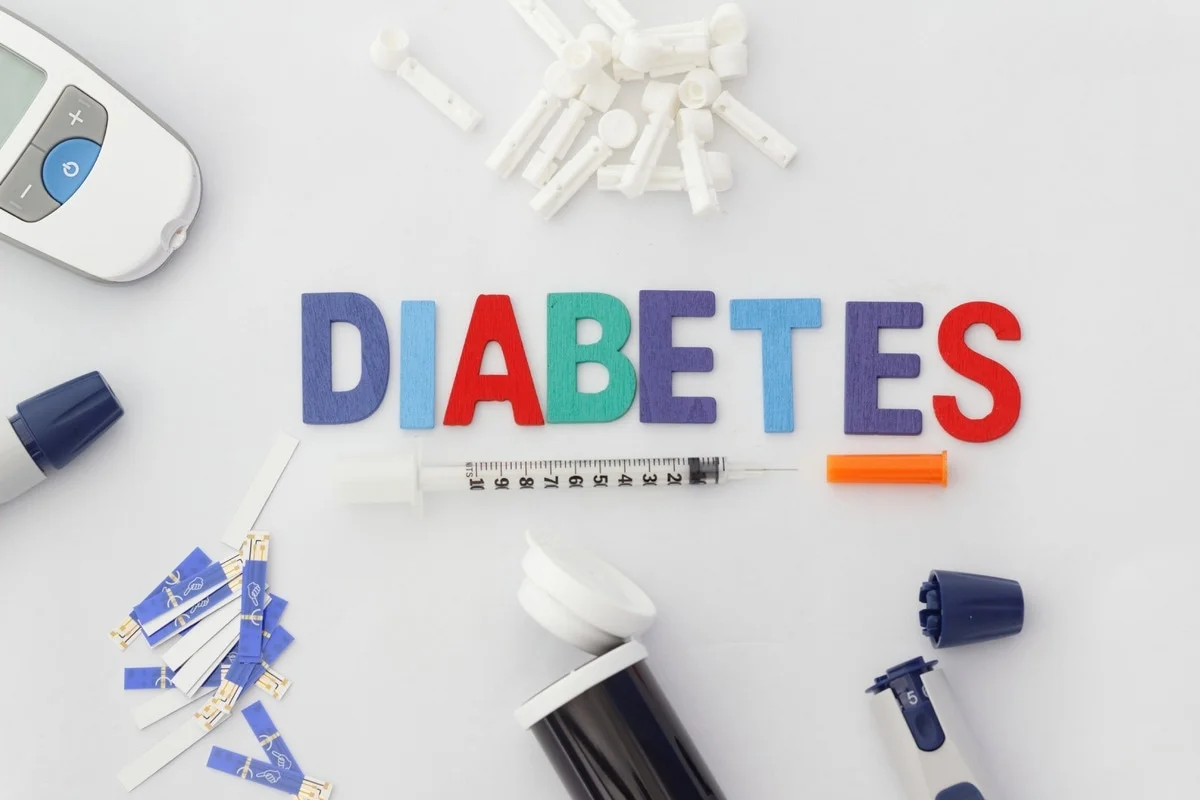Table of Contents
What is Diabetes?
Diabetes is a chronic condition characterized by high levels of sugar (glucose) in the blood. There are two main types of diabetes: type 1 and type 2. In type 1 diabetes, the body does not produce insulin, a hormone that regulates blood sugar levels, while in type 2 diabetes, the body does not produce enough insulin or is unable to use insulin effectively. Both types of diabetes can lead to serious health complications if not properly managed.
Is Diabetes Hereditary?
There is a genetic component to the development of diabetes, but it is not solely determined by inheritance. Both type 1 and type 2 diabetes have a genetic predisposition, meaning that certain genetic variations can increase a person’s risk of developing the condition. However, the development of diabetes is also influenced by lifestyle factors, such as diet, physical activity, and obesity. While a family history of diabetes can increase a person’s risk, it does not guarantee that they will develop the condition.
General symptoms of diabetes

The general symptoms of diabetes include:
- Increased thirst and frequent urination
- Extreme hunger
- Unexplained weight loss
- Fatigue
- Blurred vision
- Slow healing of cuts and bruises
- Numbness or tingling in the hands and feet
- Recurrent infections
It’s important to note that some people with type 2 diabetes may not experience any symptoms, and the condition may be discovered during routine medical testing. If you are experiencing any of these symptoms, it is important to talk to your doctor and get tested for diabetes.
Type 1 diabetes

Type 1 diabetes is an autoimmune condition in which the body’s immune system attacks and destroys the insulin-producing cells in the pancreas, known as beta cells. This results in a lack of insulin production and the need for insulin replacement therapy through injections or an insulin pump.
Type 1 diabetes is typically diagnosed in childhood or adolescence and is sometimes referred to as juvenile diabetes. It is a chronic condition that requires lifelong management with insulin therapy, healthy eating, and physical activity.
People with type 1 diabetes are at increased risk for various health complications, including heart disease, neuropathy, kidney disease, and eye problems, among others. Good glucose control, achieved through proper management, can help to reduce the risk of these complications.
Type 2 diabetes

Type 2 diabetes is a chronic condition characterized by high levels of sugar (glucose) in the blood. It is the most common form of diabetes, accounting for about 90-95% of all diabetes cases.
In type 2 diabetes, the body does not produce enough insulin or is unable to use insulin effectively, leading to elevated blood sugar levels. This condition often develops gradually over time and is commonly associated with being overweight or obese, physically inactive, and having a family history of diabetes.
Type 2 diabetes is typically treated with a combination of lifestyle changes, such as healthy eating and increased physical activity, and medications, such as oral hypoglycemic agents or insulin. In some cases, weight loss through lifestyle changes can even lead to remission of the condition.
Good glucose control, achieved through proper management, is important for reducing the risk of long-term health complications associated with type 2 diabetes, including heart disease, neuropathy, kidney disease, and eye problems, among others.
What is Causes of diabetes?
The exact cause of diabetes is not fully understood, but both genetic and environmental factors play a role in its development.
Type 1 diabetes is thought to be caused by an autoimmune process, in which the body’s immune system attacks and destroys the insulin-producing cells in the pancreas. The exact trigger for this process is not known, but it is believed to involve a combination of genetic and environmental factors.
Type 2 diabetes is caused by a combination of insulin resistance (when the body’s cells do not respond properly to insulin) and decreased insulin production. This can be due to a combination of factors, including:
- Genetics: Certain genetic variations can increase the risk of developing type 2 diabetes.
- Obesity: Excess body fat, especially in the abdominal area, can lead to insulin resistance and increase the risk of type 2 diabetes.
- Physical inactivity: A sedentary lifestyle can increase the risk of developing type 2 diabetes.
- Poor diet: A diet high in processed and high-fat foods can increase the risk of type 2 diabetes.
- Age: The risk of developing type 2 diabetes increases with age.
- Race/ethnicity: Certain racial and ethnic groups, such as African Americans, Hispanics, and Native Americans, have a higher risk of developing type 2 diabetes.
It’s important to note that while these factors can increase the risk of developing diabetes, they do not necessarily cause the condition. Many people with these risk factors never develop diabetes, and some people who do develop the condition may have none of these risk factors.
In which age diabetes cause?
Diabetes can occur at any age, but the risk of developing the condition increases as people get older.
Type 1 diabetes most commonly develops in childhood or adolescence, but it can occur at any age. Type 2 diabetes, on the other hand, is more common in middle-aged and older adults, but it is becoming increasingly common in younger people, including children and adolescents, due to the rise in obesity and sedentary lifestyles.
It’s important to note that early detection and management of diabetes can help reduce the risk of long-term health complications, regardless of age. Regular medical check-ups and screening for diabetes, especially for those at increased risk, are important for early detection and management of the condition.
How can prevent from diabetes?
While there is no sure way to prevent diabetes, there are several steps that can be taken to reduce the risk of developing the condition.
- Maintain a healthy weight: Excess body weight, especially in the abdominal area, can increase the risk of developing type 2 diabetes. Maintaining a healthy weight through a balanced diet and regular physical activity can help reduce this risk.
- Exercise regularly: Regular physical activity can help improve insulin sensitivity and lower the risk of developing type 2 diabetes. Aim for at least 30 minutes of moderate-intensity activity most days of the week.
- Eat a healthy diet: A diet that is high in whole grains, fruits, vegetables, and lean protein and low in processed foods, added sugars, and unhealthy fats can help reduce the risk of type 2 diabetes.
- Quit smoking: Smoking is associated with an increased risk of developing type 2 diabetes. Quitting smoking can lower this risk and improve overall health.
- Limit alcohol consumption: Heavy alcohol consumption can increase the risk of developing type 2 diabetes. Limiting alcohol consumption to moderate levels, or avoiding it altogether, can help reduce this risk.
- Get regular medical check-ups: Regular medical check-ups and screening for diabetes, especially for those at increased risk, can help detect the condition early and improve outcomes.
It’s important to remember that while these steps can help reduce the risk of developing diabetes, they are not a guarantee against the condition. If you have concerns about your risk of developing diabetes, it is important to talk to your doctor and get tested.
Conclusion
In conclusion, diabetes is a chronic condition characterized by elevated levels of sugar (glucose) in the blood. There are two main types of diabetes, type 1 and type 2, which can have different causes and risk factors.
Type 1 diabetes is an autoimmune condition in which the body’s immune system attacks and destroys the insulin-producing cells in the pancreas. Type 2 diabetes is caused by a combination of insulin resistance and decreased insulin production and is commonly associated with being overweight or obese, physically inactive, and having a family history of diabetes.
While there is no sure way to prevent diabetes, steps such as maintaining a healthy weight, exercising regularly, eating a healthy diet, quitting smoking, limiting alcohol consumption, and getting regular medical check-ups can help reduce the risk of developing the condition.
Early detection and proper management of diabetes, through lifestyle changes and medications, is important for reducing the risk of long-term health complications and improving overall health.




